
Tank scrubbers and vapor recovery units
Release of harmful substances during loading and unloading
Customised advise from one of our specialists.
Fill in the form below and we will contact you as soon as possible.
Get in touch with us
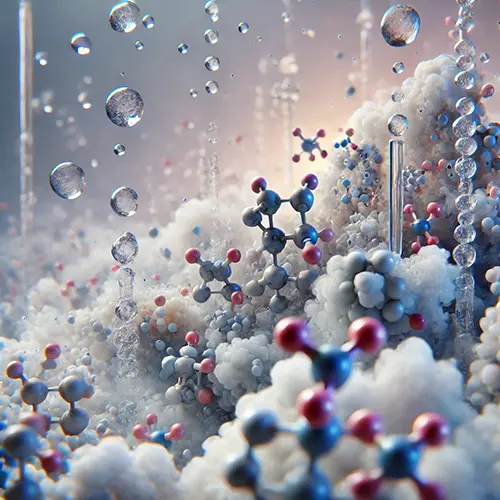
Regulatory Requirements for Preventing Harmful Gas Emissions in Liquid Storage Operations
The Importance of Venting During Loading and Unloading of Liquid Containers

The loading and unloading of ships, trucks, and train cars containing liquids result in the emission of gas to prevent pressure increases within the tanks and piping systems. Venting is essential, as pressure increases in tanks can lead to hazardous situations or significant damage, especially since (storage) tanks are generally not designed to function as pressure vessels.
Furthermore, for environmental reasons, it is prohibited to emit harmful substances into the atmosphere. Many governments have established regulations and laws regarding the environment that outline the necessary measures to prevent harmful emissions. In cases where harmful, toxic, or strongly odorous gases or vapors are involved, unrestricted emission is not permitted. The operator of the facility is responsible for ensuring that the released gases or vapors are treated to remove harmful components.
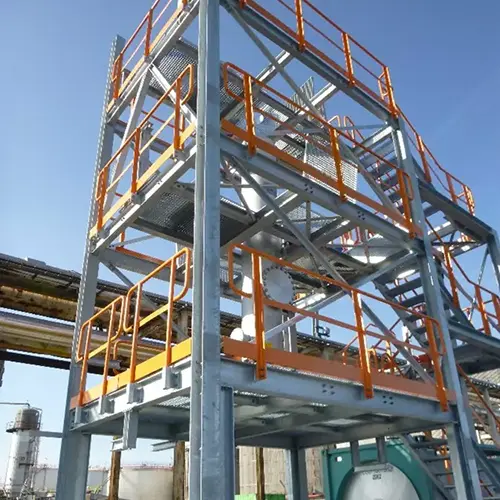
Overview of Passive and Active Vapor Return Systems for Gas Purification
Two Types of Vapor Return Systems

Passive: In this system, the gas is transported to the scrubber under slight overpressure by the pump, based on liquid displacement during the loading and unloading processes. This method of gas purification is not feasible in certain static applications due to pressure increases in the tank caused by temperature rises. The scrubbers manufactured by Ravebo are designed with such low-pressure loss that this can be easily achieved.
Active: Required in static applications, particularly when multi-stage gas purification systems must be implemented due to the complexity of the gas composition, which makes a single scrubber column inadequate. In such cases, there will be a pressure loss across the gas purification system, necessitating the use of a fan. The operation of the fan is based on continuous monitoring of the pressure within the loading and unloading system; maintaining this pressure is crucial to prevent emissions or damage. The fan's flow rate is precisely controlled using an inverter-driven electric motor, which helps avoid pressure fluctuations and ensures safe operation.
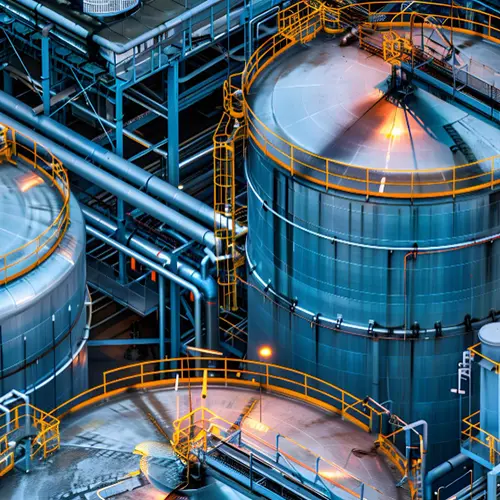
Why Each Storage Tank Requires Its Own Cleaning Process and the Role of Wet Gas Scrubbers in Vapor Return Systems
Does each storage tank require its own cleaning process?

There are several reasons why individual cleaning for each tank is necessary:
- Different gases must not come into contact with one another;
- The storage tank is located in a remote area, making long pipelines prohibitively expensive;
- The costs associated with a larger conventional scrubber;
- Energy consumption, as no fan or pump is required.
Wet gas scrubbers One of the most prevalent gas cleaning systems for vapor return systems is the wet gas scrubber. Due to its versatility and wide range of applications, the scrubber is among the most commonly employed techniques, as it can be installed directly at the emission source, ensuring explosion safety. This configuration eliminates the need for lengthy discharge pipes, resulting in a compact system that incurs relatively low costs. Furthermore, a vertical tank scrubber occupies a minimal footprint, thereby limiting the space required on platforms or docks.
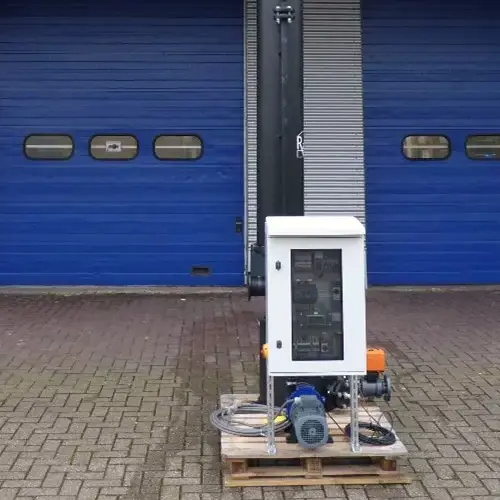
How Wet Gas Scrubbers Enhance the Absorption and Separation of Contaminants in Vapor Return Systems
The Process and Efficiency of Wet Gas Scrubbers in Liquid-Gas Absorption

A wet gas scrubber operates based on the integration and separation of liquid and gas phases. The process of liquid-gas integration, or absorption, involves the dissolution of one or more soluble components from a gas mixture into a liquid solvent. This absorption process can be classified into two categories: physical and chemical. Physical absorption occurs when the absorbed substance dissolves in the solvent, while chemical absorption occurs when a reaction takes place between the absorbed substance and the solvent. Commonly utilized liquids as solvents include water, mineral oils, non-volatile hydrocarbon oils, and aqueous solutions.
A well-designed wet gas scrubber facilitates extensive interaction between the gas and the solvent, thereby enhancing the absorption of contaminants. Its performance significantly surpasses that of a poorly designed gas scrubber. The rate of mass transfer between the two phases is primarily influenced by the surface area exposed and the duration of contact. Additional factors affecting the absorption rate, such as the solubility of the gas in the specific solvent and the extent of the chemical reaction, are characteristic of the components involved and are relatively independent of the equipment utilized.
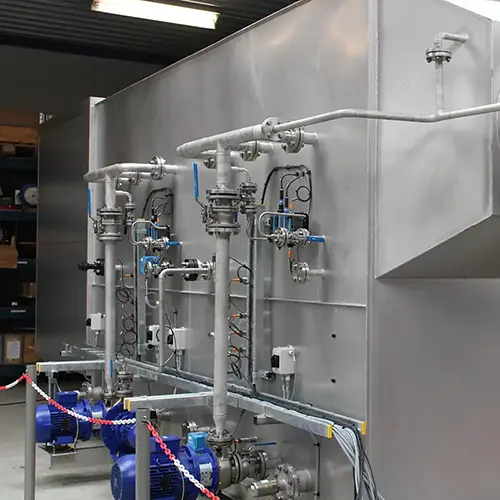
Effective Methods for Liquid-Gas Separation in Vapor Return Systems
Vane-Type, Chevron-Type, and Wire Mesh Demisters for Optimal Efficiency

Liquid-gas separation occurs by physically separating liquid droplets from the gas stream. Commonly used separators include vane-type and chevron-type separators, as well as wire mesh demisters. These separators work by removing liquid droplets based on mass inertia. The application will determine whether a separator capable of removing large masses or one that targets very small particles for maximum efficiency is required.
Construction
The construction of a gas scrubber is particularly well-suited for both continuous gas flows and highly variable flow rates, which are often characteristic of batch processes. Its robust and straightforward design minimizes maintenance requirements while ensuring reliability. This type of scrubber is especially effective for applications such as vent gas scrubbing for storage tanks in tank farms. Due to its compact design, it is even feasible to implement a mobile version of the scrubber, allowing a single unit to serve an entire tank farm. Connecting multiple tanks to a single scrubber is generally undesirable and, in some instances, may be prohibited.
Game-changing benefits
Discover the game-changing benefits of scrubbers and propel your business forward with our free whitepaper download.
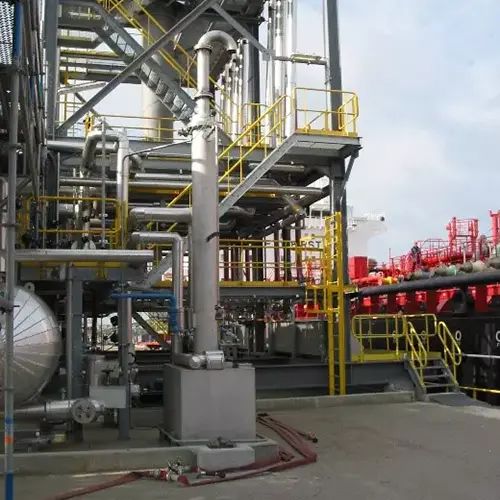
Tailor-Made Scrubbers for Diverse Applications and Emission Control
Customized Solutions for Emission Prevention in Various Industries

Tailor-made scrubbers Ravebo offers a diverse range of comprehensive scrubber systems tailored to various capacities, suitable for specific applications that range from the smallest truck terminals to the largest maritime loading operations. Our individualized approach to applications and customer requirements enables us to provide customized systems for both large and small-scale uses. Additionally, our vapor return systems are capable of meeting the most stringent emission standards globally. From the minimal gas flows associated with truck or rail applications to the extensive loading and unloading processes of tankers, Ravebo designs scrubbers that effectively manage emissions. Ravebo provides customized solutions for nearly every conceivable application aimed at preventing emissions. In collaboration with the client, we explore all possibilities to achieve the optimal outcome, including:
- Addressing emissions from storage tanks due to pressure and/or temperature increases;
- Mitigating gas displacement resulting from the pumping of liquids;
- Enhancing loading stations, which also contributes to improved working conditions.
Get in touch with our scrubber specialist
Our gas scrubbers with analyzing systems make it possible to clean various gas flows. This leads to a cleaner living environment and more sustainable production processes. Curious about the possibilities? Our specialists are happy to provide you with appropriate advice.
